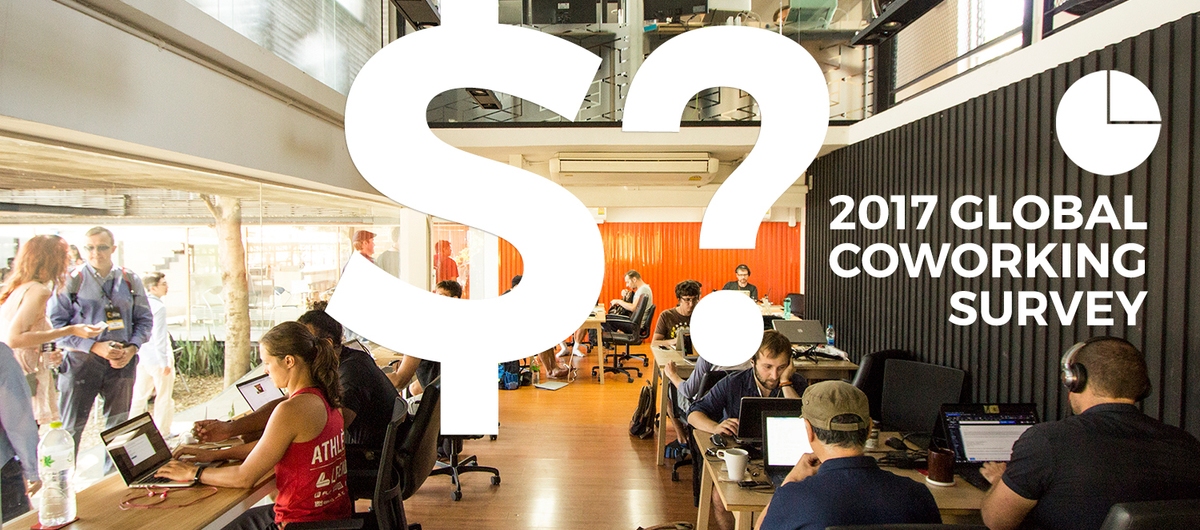:::
➡️ Read the 2023 article on the profitability of coworking spaces ⬅️
:::
According to self-reported figures, 40% of all coworking spaces are profitable. The percentage has risen for four years running. In 2013, it was only 32%. Conversely, the percentage of coworking spaces that lost money saw a distinct drop, to 26% (in 2013: 36%). One factor is age. Coworking spaces still find themselves in a very new market. Nearly every third coworking space first opened within the last twelve months; four years ago, this figure was nearly half. On average, they break even in the thirteenth month after opening — that is, they are no longer accruing operating losses, but they are not making any profit either.
:::
Find the 2019 results here.The independent analysis of the 2017 Global Coworking Survey
was performed with Social Workplaces & was supported by
Nexudus, Essensys & Communitas. Download the free report.
:::
This low but rising average age partly explains the growing proportion of coworking spaces that are profitable. But playing for time doesn’t work well as a strategy for a successful coworking space. Some spaces dissolve after only a short time, and are no longer included, and this also drives numbers up. Other factors affect profitability in a much more lasting way. We have explored the obvious ones and the less obvious ones, and whether and how they are connected.
Membership figures are key
The most influential factor is membership figures. The more clients — or, in this case, members — that a company has, the more profits go up. It’s really not news that coworking spaces also function this way. Three in four coworking spaces with 200 or more members are past the break-even point. For coworking spaces that are one year or older and operate as for-profit enterprises, the number is even higher. Just 3% report losses. The same goes, to a lesser extent, for size. The larger the workspace a coworking space can offer, the more members can join.
However, if they are not at capacity, profitability then sinks. Half of for-profit coworking spaces with fewer members than workstations still don’t make a profit after a year.
Coworking spaces in big cities have it easier …
Another, somewhat less critical factor is location. Coworking spaces increase their profit margins more often and more quickly the larger the surrounding area is. Small-town, rural, and even suburban regions clearly present operators with greater challenges in establishing a sustainable coworking space.
… when the field isn’t too crowded.
In the largest cities, with a million or more inhabitants, profitability tracks with the number of competitors. Where few coworking spaces exist, demand and membership are lower. The more competitors that are active, the stronger coworking spaces are in general. In cities where there are 50 or more competitors, though, profitability drops again. There’s no clear explanation. On the whole, there’s no lack of members, and operators’ membership figures and income are on average above the level of coworking spaces with fewer competitors. Rent as a proportion of expenses isn’t skyrocketing. Possibly, expenses in these locations — including rent — are substantially higher than in others. There isn’t enough data to arrive at an explanation through deeper study. The fact that it’s mainly unprofitable coworking spaces that say there are ‘too many coworking spaces’ in the area is less surprising. Against this backdrop, meanwhile, we can’t discount the notion that in some cities there really is an oversupply.
More private offices secure finanicial sustainability, more meeting spaces can damage it
In recent years, more and more coworking spaces are offering private and team offices alongside desks in open workspaces — and are seeing clear corresponding increases in income and profitability. Only one in four coworking spaces without these offerings are turning a profit. With private or team offices, that number rises to half. But when revenues from this service dominate, it’s not just spaces’ profitability that’s on the decline. The coworking concept itself is also challenged. Particularly if those offices remain unconnected with open workspaces.
Likewise, meeting spaces count as a good supplementary income stream. But too many of them can leave behind a big hole in the budget. Besides below-average membership figures, unprofitable coworking spaces are characterized above all by too many meeting spaces. If these rooms occupy more than one fourth of the floor space or revenue, coworking spaces have a higher-than-average probability of going bankrupt.
In this survey, respondents had the opportunity to share their businesses’ priorities. With their higher share of private offices (one-third), “business centers” and “shared offices” performed better than “coworking spaces” or “community spaces,” which offer fewer offices but are clearly younger, as well.
At the same time, private offices raise the percentage of dedicated workstations, which is also why coworking spaces with a large percentage of dedicated desks perform better overall. Still, 40% of all coworking spaces that have only flexible workspace are profitable, which is not below average. In general, a mix of the two approaches, with an emphasis on dedicated desks, seems to perform best.
Curated coworking spaces aren’t more profitable than open spaces
Overall, coworking spaces that are open to all people achieve a higher chance to become profitable— particularly in cities with a million or more residents. But in spaces that have been open for at least one year and are for-profit businesses, there is little difference in profitability between ones that follow an open-for-all policy, ones that seek a curated mix of members or clients, and ones that serve a specific niche — with one exception.







